#Smallanthus uvedalia
Text

Smallanthus uvedalia / Bear's Foot at the Sarah P. Duke Gardens at Duke University in Durham, NC
#Smallanthus uvedalia#Smallanthus#Asteraceae#Bear's Foot#Hairy Leafcup#Yellow flower Leafcup#Native plants#Native flowers#Wildflowers#Plants#Flowers#Nature photography#photography#photographers on tumblr#Sarah P. Duke Gardens#Duke Gardens#Duke University#Durham#Durham NC#North Carolina#🌺🌻
4 notes
·
View notes
Text

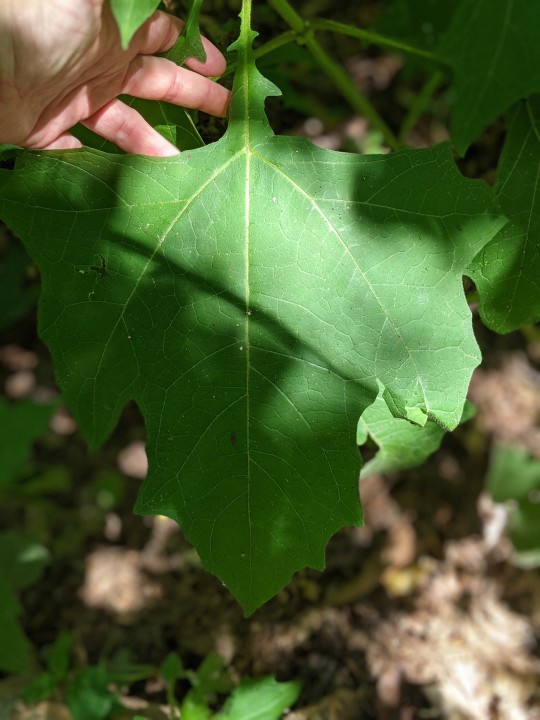



Smallanthus uvedalia - Bear's foot, hairy/yellowflower leafcup
#big wide leaves on these fellas#plant id#native plants#wildflowers#smallanthus#smallanthus uvedalia#smallanthus uvedalius#sources give both & idk which is more accepted#leafcup#bear's foot#hairy leafcup#yellowflower leafcup
4 notes
·
View notes
Text

bear's foot (Smallanthus uvedalia), a plant in the sunflower and dandelion family (Asteraceae)
let's see what is going on here
first we see lots of aphids having a slurping party, sucking the plant juices. These aphids belong to genus Uroleucon. Species in this genus are usually reddish and feed on plants in the Asteraceae family.

around the aphids there are lots of large orange-brown ants. I think they are chestnut carpenter ants, Camptonotus castanaeus. Sometimes ants keep aphids as livestock and milk them for the honeydew they produce, and carpenter ants are known to do so, It is possible that the ants are taking care of the aphids
This ant has only one antenna, and her front foot is white. She has a disability, but it seems like she is accepted in ant society.

This crab spider (family Thomisidae) is yellow like the flower petals for camouflage. It will try to catch a bug that comes to pollinate the flower

This pollinator is a bumble bee, genus Bombus. You can see the pollen all over its face and some on its belly. The plant provides nectar in exchange for pollen distribution services.

This fly is very fabulous and elegant. It has beautiful green eyes and fashionable black markings on its wings. It belongs to the family Dolichopodidae, the long-legged flies. These flies are predators, and some of them eat aphids. Probably the fabulous and elegant fly hopes to steal some of the ants' livestock.

This fly is more round and hairy. It looks like it might belong to the house fly family, Muscidae.

This spider is hanging out under the leaf. It belongs to the genus Micranthena. Its butt spikes are pretty swag. It is probably here to catch one of the flies.

This has been a tour of one plant and the ecosystem it supports.
218 notes
·
View notes
Photo

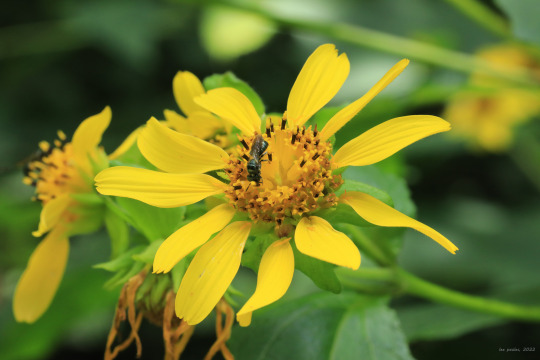

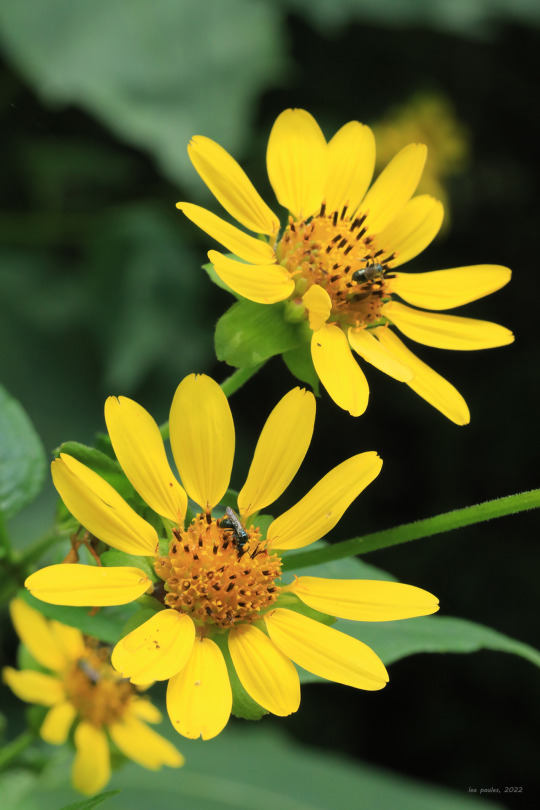
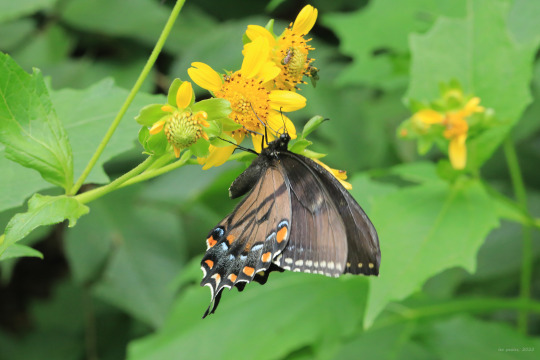

Smallanthus as sustainer and life-giver.
#appalachia#vandalia#west virginia#flora#wildflower#summer#insects#bombus#bumblebee#bombus impatiens#common eastern bumblebee#megachile#leafcutter bee#papilio troilus#spicebush swallowtail#papilio glaucus#eastern tiger swallowtail#smallanthus uvedalia#hairy leafcup#bear's foot#mon river trail
67 notes
·
View notes
Text
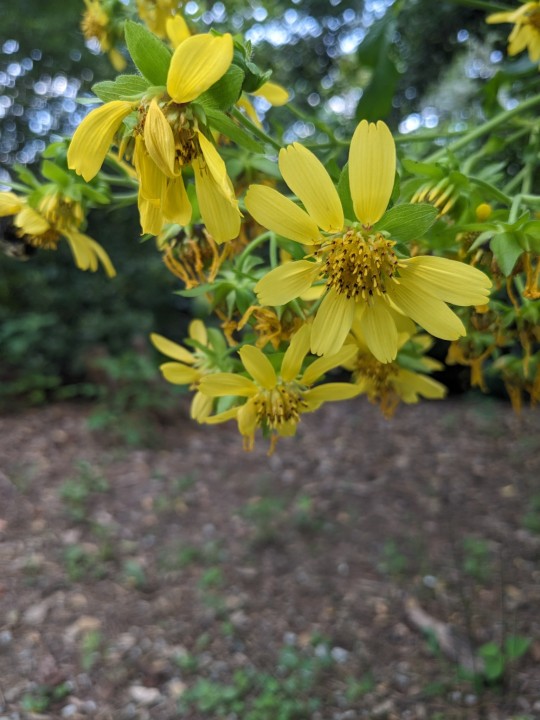
Smallanthus uvedalia / Hairy Leafcup at the Sarah P. Duke Gardens at Duke University in Durham, NC
#Hairy Leafcup#Native plants#Native flowers#Nature photography#Flowers#Sarah P. Duke Gardens#Duke Gardens#Duke University#Durham#Durham NC#North Carolina#Smallanthus uvedalia
1 note
·
View note
Photo

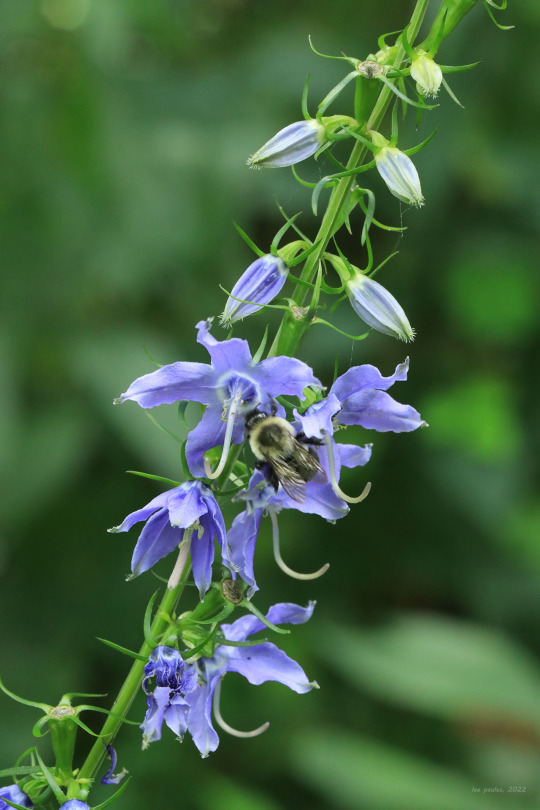
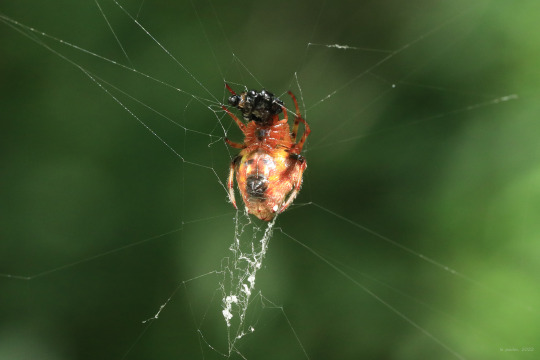

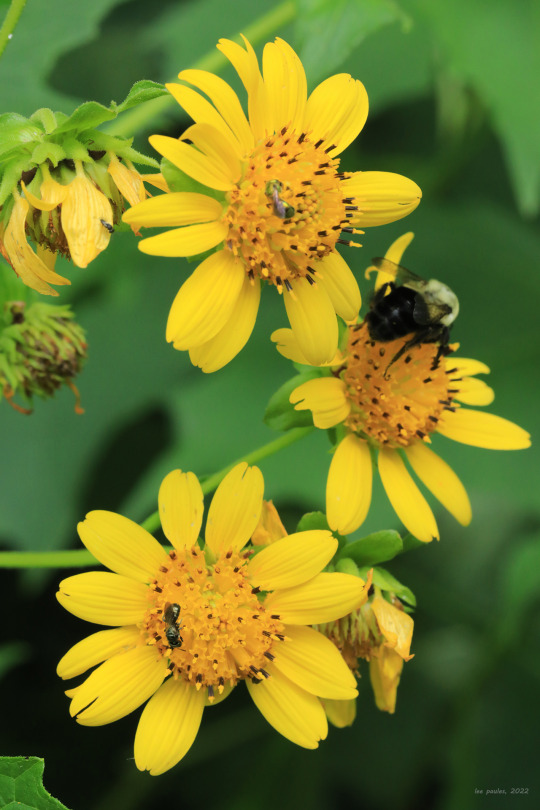

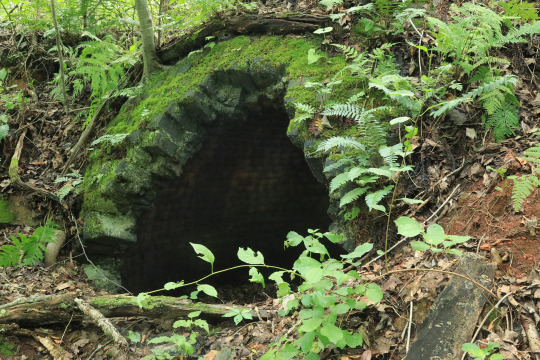

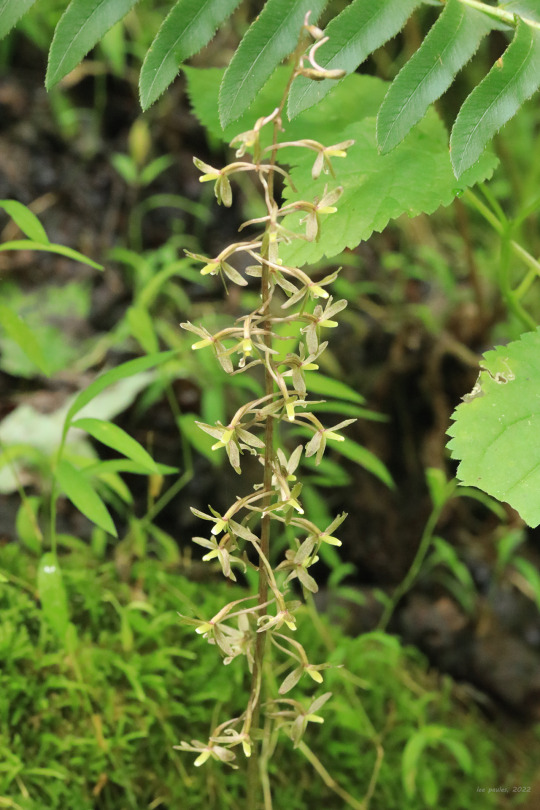
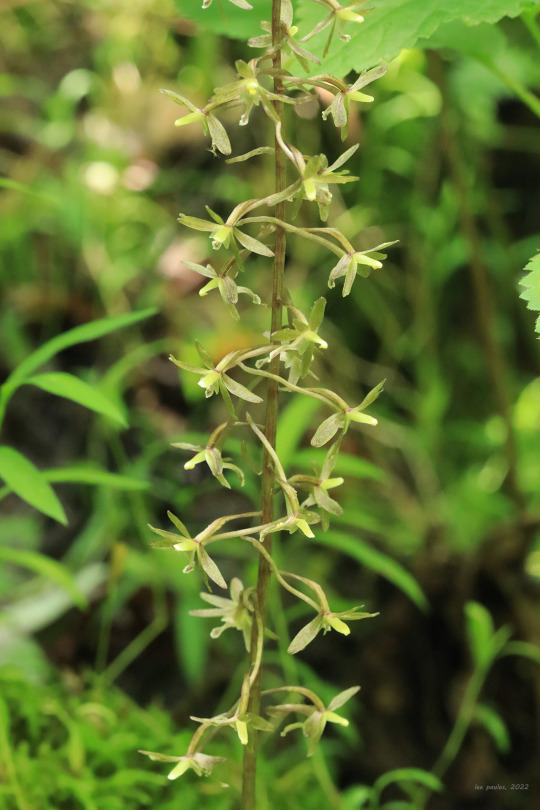
Above are a few photos from a long, mid-summer bike ride on the Mon River Trail yesterday. My destination was the historic beehive coke ovens at mile marker 22, where one of the most elusive and delicate of Appalachia’s terrestrial orchids, cranefly orchid (Tipularia discolor), blooms this time of year. This colonizing perennial has one of the most fascinating life-cycles in the plant kingdom. Hairy leafcup (Smallanthus uvedalia), also known as bear’s foot due to its enormous, lobed leaves, is another great summer wildflower. This perennial’s massive blooms arguably draw even more pollinators than those of milkweed.
From top: American bellflower (Campanula americana), a tall, graceful lover of shady woodland edges; an arrowhead orb weaver (Verrucosa arenata), enjoying an early brunch from her delicately-spun web; an eastern tiger swallowtail (Papilio glaucus) taking a sip of sweet nectar from hairy leafcup; the bright yellow flowerheads of hairy leafcup, which draw a steady stream of pollinators; historic beehive coke ovens, crucial to fueling the iron and steel industry in the late nineteenth century; and the delicate, drooping flowers of cranefly orchid, also known as crippled cranefly orchid.
#appalachia#vandalia#west virginia#summer#wildflowers#flora#orchidaceae#beehive coke oven#industrial history#human history#mon river trail#tipularia discolor#cranefly orchid#crippled cranefly orchid#smallanthus uvedalia#hairy leafcup#bear's foot#campanula americana#american bellflower#verrucosa arenata#arrowhead orb weaver#eastern tiger swallowtail#papilio glaucus
42 notes
·
View notes